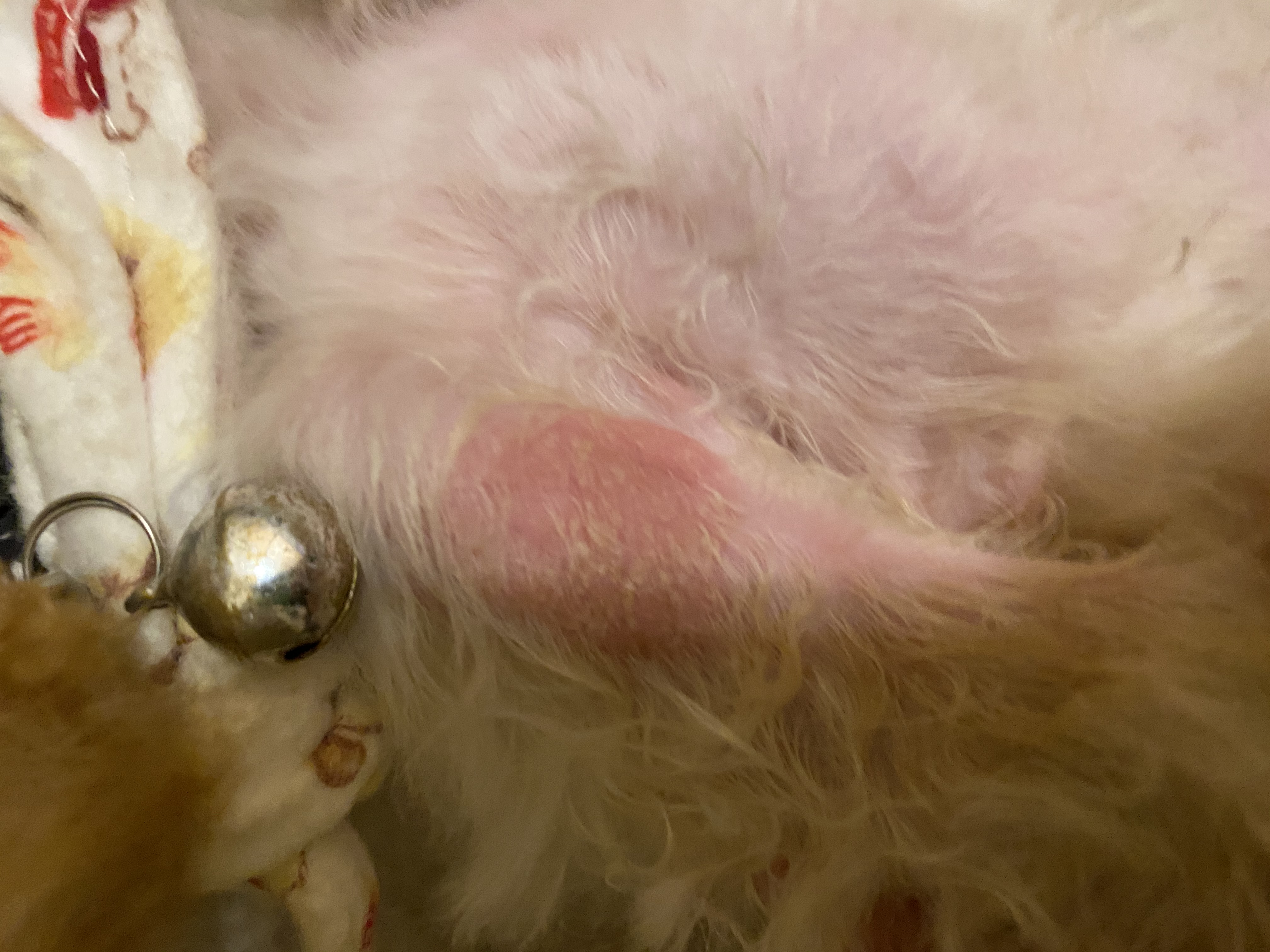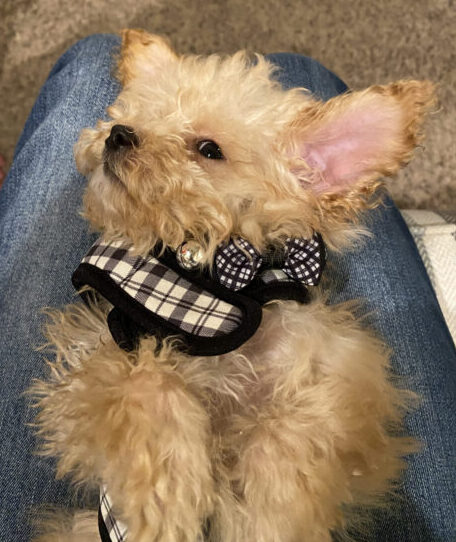The Beginners Guide to What is Ringworm and What Causes It?
Ringworm is the common name given to a fungal infection of the superficial layers of the skin, hair, and nails. Ringworm infections can occur in humans and in all domesticated species of animals. The name comes from the classical appearance of the round, red, raised ‘ring’ marking the boundary of inflammatory lesions in people infected with the disease. The common name of ringworm is somewhat misleading, in that it is not an infection caused by a worm, and the infected areas are not always ring-shaped. The fungi responsible for ringworm infections belong to a specialized group known as dermatophytes, so the medical name for this disease is dermatophytosis.
There are a number of distinct species of dermatophytes. Some species of dermatophytes are species specific, meaning that they will only infect one species, whereas others can be spread between different species of animals, or from animals to humans. The three most common fungal species that may cause ringworm in dogs are Microsporum canis, Microsporum gypseumand Trichophyton mentagrophytes. These three species of ringworm are zoonotic, meaning they can also infect humans.

Symptoms of Ringworm in Dogs
Ringworm is not a life-threatening disease, but it is very contagious and does require the intervention of a veterinarian (or in my case I choose a all natural doctor like Daves Health and Nutrition in Utah, but a vet to diagnose it and even give you their stuff as well is great too and we have done as well). Knowing the symptoms of ringworm in dogs can help you catch the disease before it passes to humans or other pets.
In dogs, ringworm usually presents as circular areas of hair loss throughout the body. These lesions may start to heal in the center as they enlarge, creating a patchy appearance, and may become inflamed or scabbed.
Ringworm usually does not itch. The affected hair follicles are brittle and break easily, which helps spread the disease throughout your home. In some cases the fungus infects the claws, making them brittle and rough.
Contact your veterinarian if your dog experiences any or all of these symptoms:
- Circular areas of hair loss
- Dry, brittle hair
- Scabby, inflamed skin
- Rough, brittle claws
Hair loss, changes in coat appearance, or inflamed skin could be a sign of another condition. Skin problems are associated with many serious underlying conditions in dogs, like Cushing’s disease, hypothyroidism, a nutrient imbalance, or could simply be symptoms of other skin conditions like allergies, a different parasite, or an infection. Any time you are unsure call your vet!
More Details on What does ringworm look like?
- Ringworm fungi feed on the keratin that is found in the outer layers of the skin, hair, and nails. In dogs, the fungi commonly infect hair follicles, which causes the affected hair shafts to break off at the skin line. This usually results in round patches of hair loss. As the fungus multiplies, the lesions may become irregularly shaped and spread over the dog’s body.
- In the dog, ringworm lesions usually appear as areas of hair loss (alopecia) that are roughly circular. As these circular lesions enlarge, the central area heals and hair may begin to regrow in the middle of the lesion. The affected hair shafts are fragile and easily broken. These lesions are not usually itchy, but sometimes they become inflamed and develop a scabby covering. In most cases, there are several patches of alopecia scattered throughout the body. Occasionally fungal infection of the nails (onychomycosis) may occur. The claws become rough, brittle, and broken.
- Some dogs may have ringworm fungi present in their hair or skin without showing any clinical signs of disease. These dogs can spread ringworm to other animals or people despite having no obvious skin lesions, and are called ‘asymptomatic carriers’. Asymptomatic carriers are especially problematic in multi-animal environments such as animal shelters or kennels as they can spread the ringworm fungi to many other animals and people while showing no clinical signs.
How is Ringworm Spread?
Ringworm is a contagious fungal infection caused by common mold-like parasites that live on the cells in the outer layer of your skin. It can be spread in the following ways:
- Human to human. Ringworm often spreads by direct, skin-to-skin contact with an infected person.
- Animal to human. You can contract ringworm by touching an animal with ringworm. Ringworm can spread while petting or grooming dogs or cats. It’s also fairly common in cows.
- Object to human. It’s possible for ringworm to spread by contact with objects or surfaces that an infected person or animal has recently touched or rubbed against, such as clothing, towels, bedding and linens, combs, and brushes.
- Soil to human. In rare cases, ringworm can be spread to humans by contact with infected soil. Infection would most likely occur only from prolonged contact with highly infected soil.
How long does it take for the lesions to appear?
The incubation period between exposure to ringworm fungus and the development of ringworm lesions usually ranges from seven to fourteen days; some cases may take up to 21 days before signs of infection develop.
Treatment of Ringworm in Dogs:
Your vet will diagnose your dog with ringworm by performing a diagnostic test, as well as a physical exam. He will probably take a sample of hair or skin cells for a fungal culture or examine infected hairs under a special ultraviolet light called a Wood’s lamp.
Once ringworm is diagnosed, your vet will discuss a treatment plan for your dog. This treatment plan depends on the severity of the case, the number of pets in the household, and whether or not there are children or immunocompromised adults in the home.
Treating ringworm in dogs usually consists of three steps:
- Topical therapy
- Oral medications
- Environmental decontamination
- Natural Options
Topical Therapy for Ringworm
Your veterinarian will probably recommend a topical therapy, like a cream, ointment, and/or medicated shampoo to help treat and control the infection. Your vet might also suggest clipping long-haired dogs to speed up treatment and shaving the hair from affected areas. Topical therapy can take several months to fully eliminate the infection, but does help prevent environmental contamination.
Oral Medications for Ringworm
Oral therapy is usually used in conjunction with a topical therapy. Anti-fungal oral medications help fight the infection and, like topical therapy, need to be administered for a minimum of six weeks, but in some cases could take months to take full effect.
Your vet will most likely ask you if you have any other pets in the household and might advise that you test and treat them for ringworm, as well, even if they are not currently showing signs of a ringworm infection. It is also very important that owners continue to treat for ringworm for the prescribed period of time. Just because the clinical signs go away doesn’t mean that your dog is no longer contagious, and your vet will most likely want to retest your dog for ringworm before giving you the “all’s clear.”
Environmental Decontamination
The spores that live inside the hair follicles remain contagious for months at a time, surviving on couches, grooming tools, bedding, furniture, and clothing. Cleaning up all this hair is a part of treatment, but as many dog owners know, also a bit of a challenge.
Some owners keep their dogs in rooms that are easy to clean during the time they are infected with ringworm. This makes it easier to eliminate stray hairs and to mop with a disinfectant recommended by your veterinarian. If you can’t contain your dog to hard floors, daily vacuuming and removal of hair from furniture and surfaces can help prevent ringworm from spreading.
All Natural Remedies
I will always find an all natural remedy if I am able. Thanks to Daves Health and Nutrition in Utah (they will ship anywhere) we used the Thuja Occidentlis 30c and the Tellurium Metallic 30c we gave one pill each in their water once a day until all spots were gone and then about a week after to make sure they stay gone (a minimum of three weeks though)! Now don’t just take our word for it that would be silly, call Dave’s your self and discuss what’s best for your dog and You! And yes we treated us as well just incase. We took the Thuja Occidentlis 30c and the Tellurium Metallic 30c as well BUT our doses were Thuja Occidentlis 30c 2 pills two times a day and the Tellurium Metallic 30c 2 pills two times a day (never put by electronics it ruins them) any ways again NEVER just take my word for it call dave’s801-446-0499 (no I do not get paid to talk about him! he is amazing and has helped my family and pets over and over!) or call any of your local nutritionists.

Risk factors
You’re at higher risk of ringworm of the body if you:
- Live in a warm climate
- Have close contact with an infected person or animal
- Share clothing, bedding or towels with someone who has a fungal infection
- Participate in sports that feature skin-to-skin contact, such as wrestling
- Wear tight or restrictive clothing
- Have a weak immune system
Complications
A fungal infection rarely spreads below the surface of the skin to cause serious illness. But people with weak immune systems, such as those with HIV/AIDS, may find it difficult to get rid of the infection.
How Long Will My Dog Be Contagious?
- Infected pets remain contagious for about three weeks if aggressive treatment is used. The ringworm infection will last longer and remain contagious for an extended period of time if only minimal measures are taken or if you are not faithful with the prescribed approach. Minimizing exposure to other dogs or cats and to your family members is recommended during this period
Will my dog recover from ringworm?
The vast majority of dogs, if treated appropriately, will recover from a ringworm infection. Symptoms may recur if the treatment is discontinued too early or is not aggressive enough (i.e., only topical treatment was used), or if the pet has an underlying disease compromising the immune system. Occasionally symptoms recur because the dog is a carrier of ringworm.
Most owners don’t have to worry about ringworm prevention on a regular basis unless they have already had a case of ringworm in one or more pets. The best ways to prevent reinfection of ringworm in dogs are to fully cleanse the environment of the home and any tools and bedding that the animals regularly come into contact with, and to follow the instructions of your veterinarian.
Common Questions, Also Check Out Some Of Our Other Articles:
- What and How to Feed Your Teacup Puppy/Dog
- learn the best ways and food to feed your tiny teacup dogs 🙂
The Last Thing You Need to Know about Ringworm:
- If you think you might have ringworm contact your doctor and get an official diagnosis
- On humans it can look like a round ring or itchy patch if your pet had it you might want to at least call your doc or your nutritionist to decide if you want or need to do anything for not only your dog but your self.


